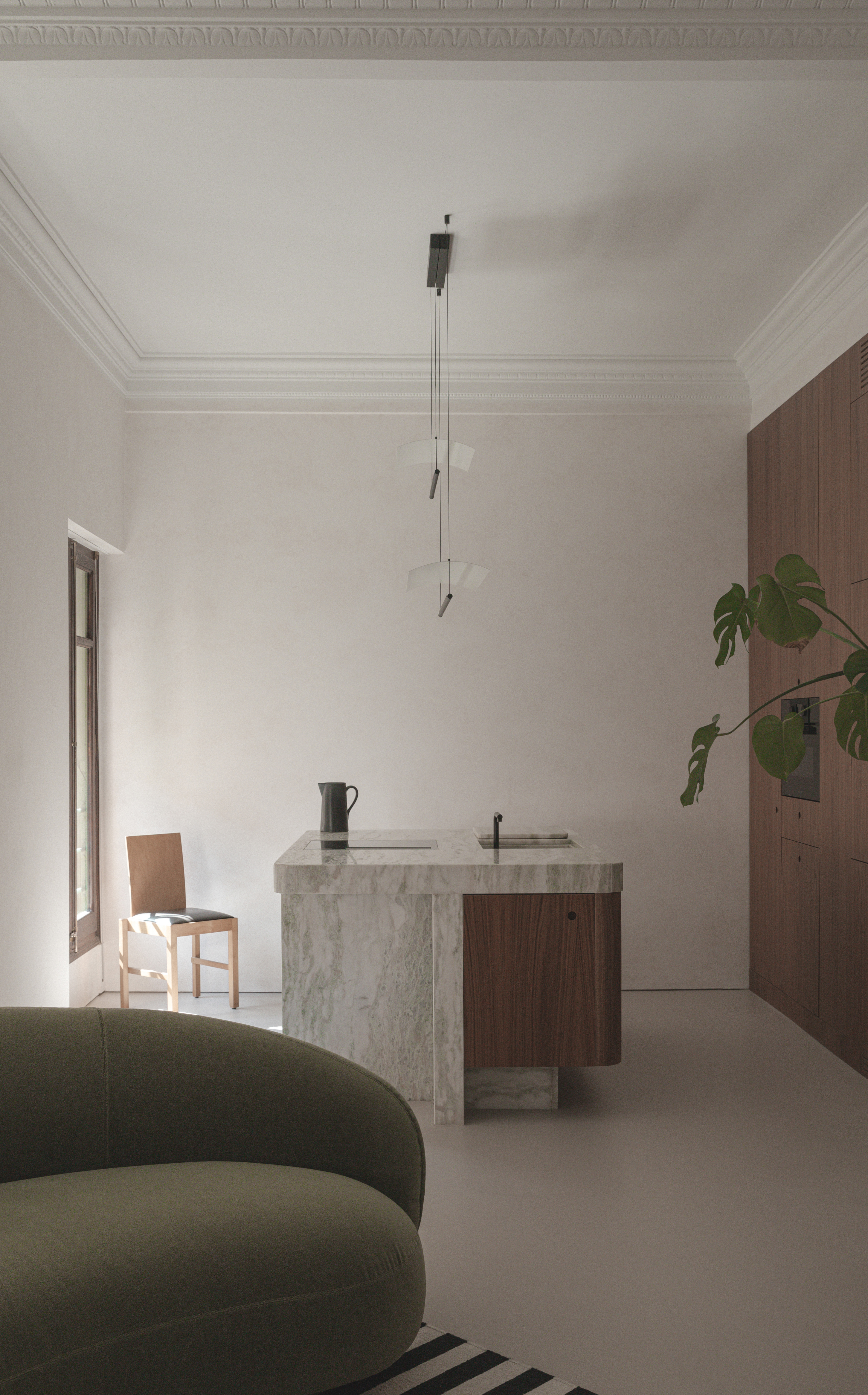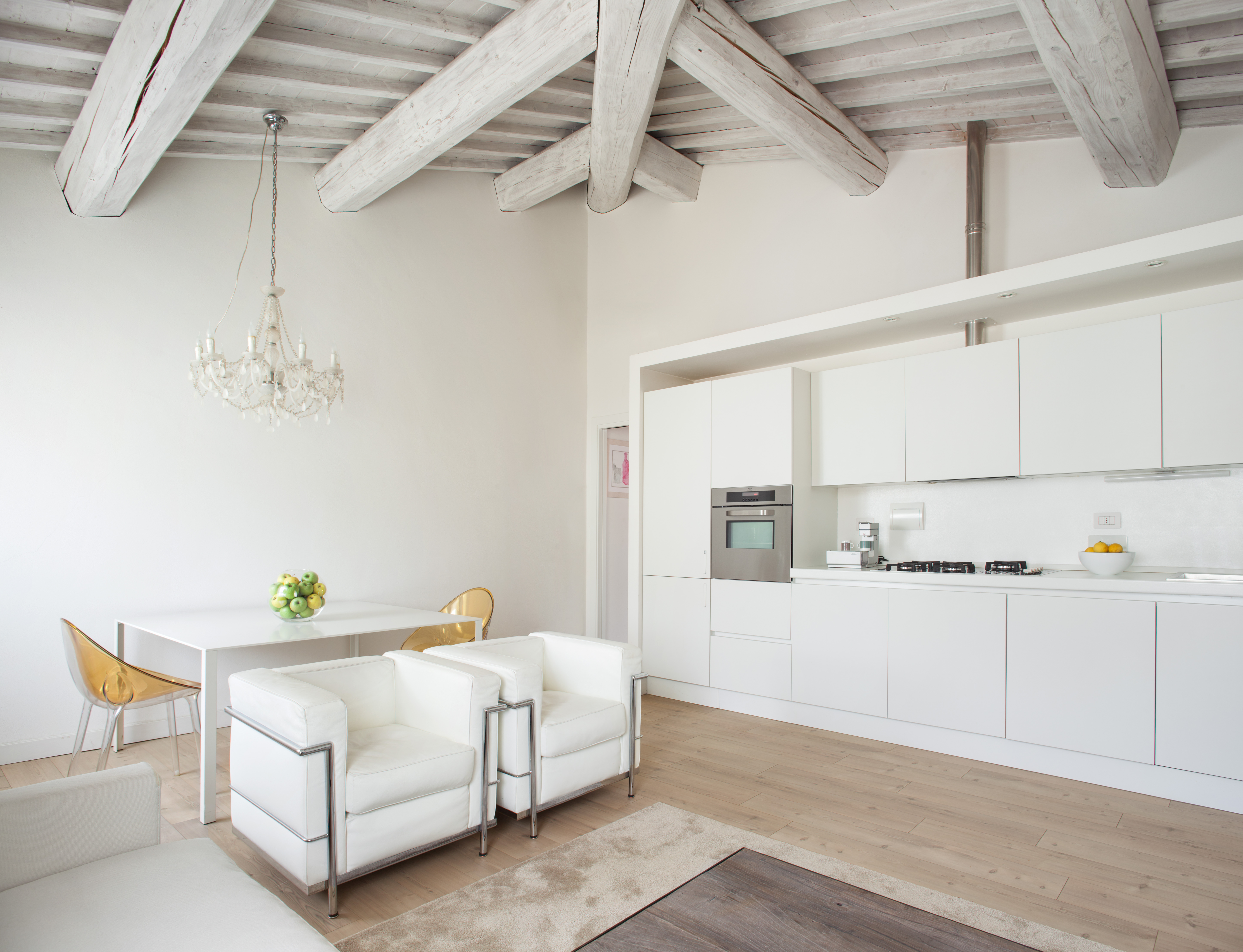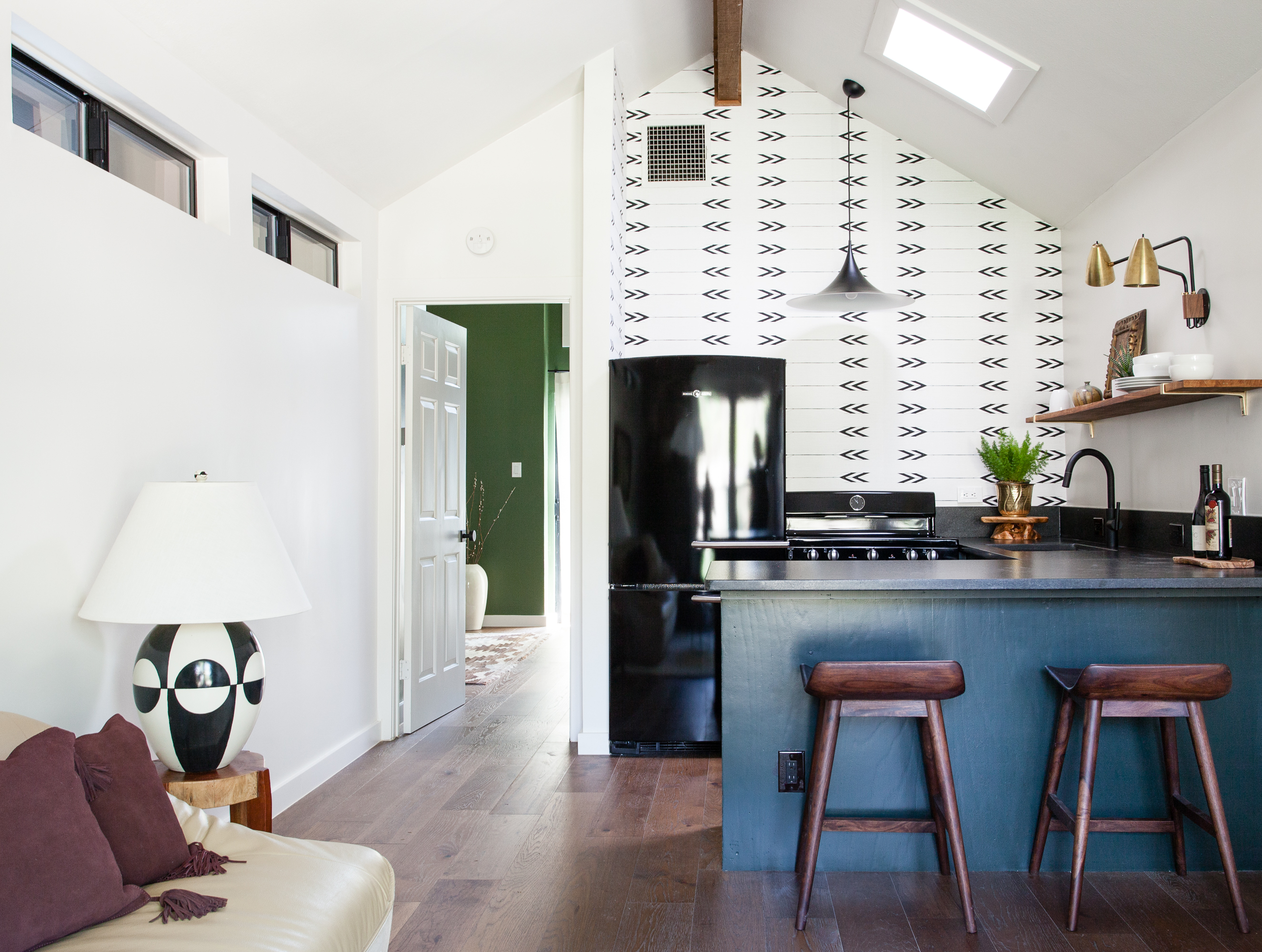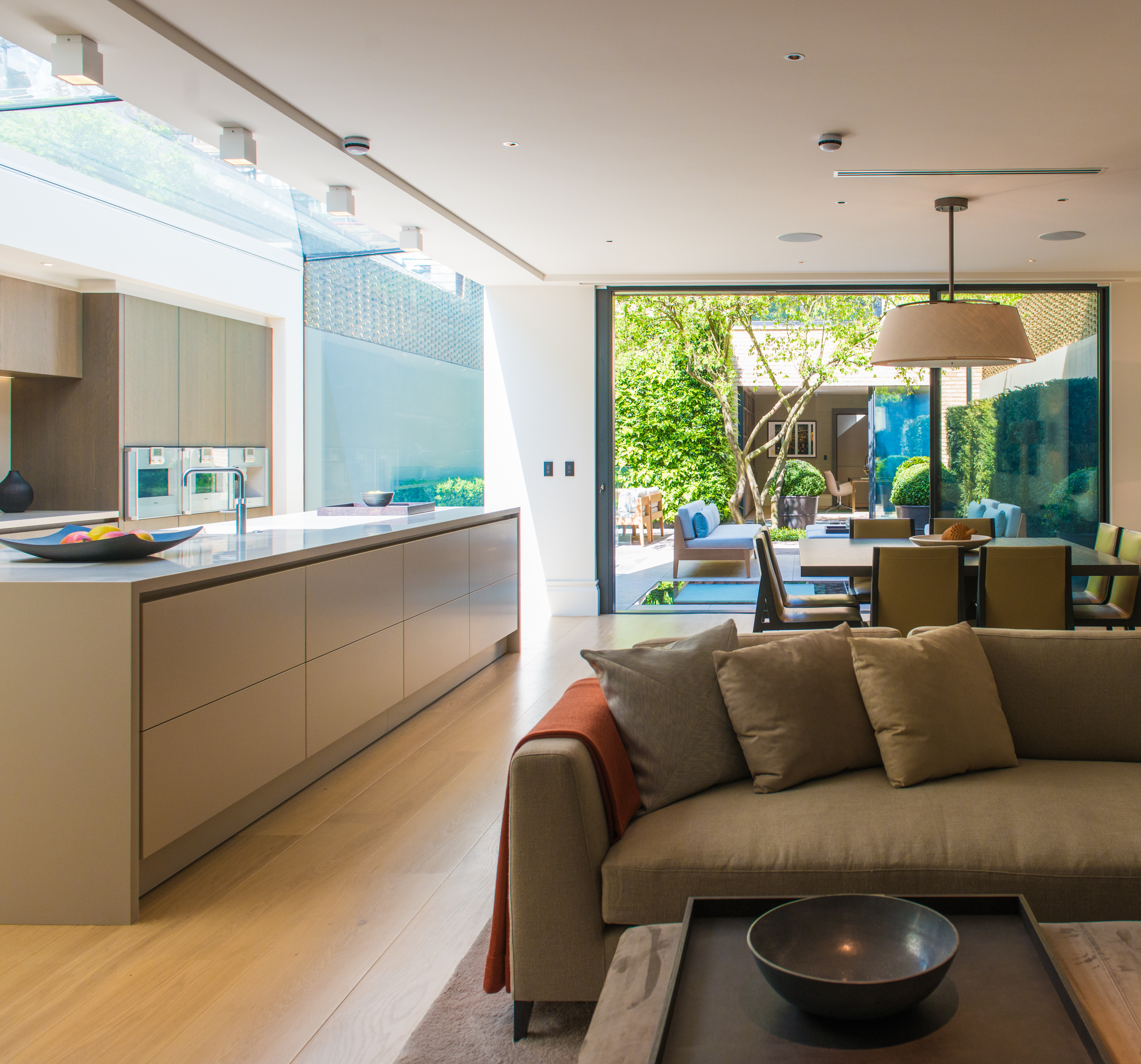Should You Put a Sofa in the Kitchen? Yes, but Only In These Specific Fabrics, Designers Warn
Whether you've got an open concept space or want to embrace the 'dining couch' trend, there are some lessons to be learned about putting a sofa in your kitchen before you do it


When it comes to furniture in the kitchen, few people consider adding a sofa to the space, and understandably so. Typically a staple in living areas, a sofa in the kitchen can feel a bit out of place. But as designers suggest, this idea isn’t entirely far-fetched in larger spaces or open-plan rooms. In fact, in cases where space permits, a sofa can serve both aesthetic and practical purposes.
A kitchen sofa can bring softness, comfort, and a convivial atmosphere, not to mention a touch of elegance to your modern kitchen. Positioned near the cooking area, it offers a spot to relax while the bread bakes or the curry bubbles. It can also help define zones, particularly when there’s no space for a divider or wall between the kitchen and living room.
That said, it’s essential to consider your kitchen’s size and layout, as well as the sofa’s style, dimensions, and fabric, before making this design choice. So, we reached out to experts to help us understand how to make this idea work. Read on.
Should You Put a Sofa in the Kitchen?

The simple answer is yes, you can put a sofa in the kitchen, if you have the space, and as long as it doesn't feel forced. “Remember, the kitchen and dining area is one of the busiest spaces in the home, making it vibrant and full of life,” says Nicky Emlick, head of Design at Sofa.com. “A colorful or textural sofa can anchor the living zone and reflect the energy of the room, while still feeling part of a cohesive whole. Just layer in complementary colors and varied materials across the space to pull it all together.”
Beyond adding kitchen color, a sofa can also transform the kitchen into a social hub, offering the perfect perching spot for friends and family to gather. In open plan kitchens, it creates soft separation and helps visually distinguish the kitchen from the rest of the living space. Alternatively, in larger layouts with unused areas, a small sofa can fill the void with warmth and softness.
And a kitchen sofa doesn’t have to be a full-sized three- or four-seater. A loveseat, a built-in tufted banquette, or even a pair of armchairs near the kitchen can add both functionality and flair.
Nicky Emlick has over 24 years of experience working on residential and commercial projects internationally. As Head of Design at sofa.com, she brings a keen eye for detail and a wealth of innovative expertise. With a natural passion for interiors, Nicky studied Art, Product Design, and Interior Design at Leeds University, where she honed her creative skillset.
What Kind of Sofa Fabric Is Best for the Kitchen?



This is perhaps the most important and practical question to ask: what’s the right material that can stand up to kitchen fumes, smells, and the occasional spill?
The Livingetc newsletters are your inside source for what’s shaping interiors now - and what’s next. Discover trend forecasts, smart style ideas, and curated shopping inspiration that brings design to life. Subscribe today and stay ahead of the curve.
Eliza Davey, interior designer at De Rosee Sa, recommends performance fabrics. She says, “Positioning a sofa near the kitchen demands more than just good taste; it calls for practical thinking. Opting for a high-performance fabric like Maharam’s Metaphor, which is durable, bleach-cleanable, and available with advanced stain-resistant finishes, takes the stress out of everyday spills and splashes. Add in proper ventilation to manage cooking odors, and regular vacuuming to reduce wear.”
Beyond performance fabrics, designers also suggest leather as a smart option. “In this project, the Jardan leather sofa in nutmeg is an example of a timeless design piece that meets these requirements and ages beautifully,” says Lauren O’Brien co-founder of tote design studio.
Interestingly, architect Francesco Pierazzi, founder of FPArchitects, took a bold approach with white upholstered armchairs and sofas. “The choice of white leather upholstery was very intentional,” he says. “The design aimed to create a cohesive, monochromatic interior where kitchen and living elements could sit comfortably side by side. And in terms of material, we went with leather, which not only brings a crisp, clean aesthetic, but it’s also highly practical, easy to wipe down and particularly well-suited to open-plan spaces where seating is placed close to cooking areas.”
“Investing in removable or washable covers, or using throws that can be easily refreshed, is a simple way to preserve your sofa’s look and longevity without compromising on style,” adds Nicky.
With a sofa positioned so close to the kitchen, you’ll need to be a bit more vigilant with maintenance. Keep a good couch cleaner handy, and if possible, have the sofa deep-cleaned once a year to eliminate lingering stains and odors.

Eliza Davey is an interior designer based in the De Rosee Sa’s London office, whose creative sensibility is shaped by her earlier work in Australia. A graduate of RMIT University, she brings a globally informed perspective to De Rosee Sa’s projects, balancing considered design with a distinctive, contemporary edge.

Lauren began her career as an architect, spending several years in architectural practices before discovering her true passion for interior design. Her architectural background provides a strong foundation for a practical, detail-oriented approach throughout the design and delivery process.

Founded in 2014, Francesco Pierazzi Architects is an award-winning, design-led practice with a rapidly growing and diverse portfolio of completed projects across the UK and internationally. The studio’s work ranges from large-scale urban refurbishments and interior remodels to smaller extensions, furniture design, exhibitions, and international competitions.
What Type of Sofa Works Best Next to a Kitchen?

This depends greatly on your kitchen layout, the size of your open-plan space, and the overall design theme of your home. If the space is on the smaller side, a built-in, banquette-style sofa can work beautifully, ideally placed near a window or integrated into the kitchen island.
“Modular seating is a brilliant alternative to a traditional sofa, especially in multifunctional spaces like kitchen diners,” says Nicky. “It’s designed to offer the best of both worlds: the sink-into comfort of a full-sized sofa, with the flexibility to adjust the configuration over time. You can create a relaxed living zone that feels like part of the kitchen, without overcrowding it.”
Low, close-to-the-ground seaters are a great option too, as they’re less likely to catch smoke and fumes compared to higher pieces. “For this casual space, we used a low-slung 70s-style sofa with recycled leather upholstery,” says Erin Williamson, founder of Erin Williamson Design. “Because the living area is open to the kitchen, and modern life often means snacks on the couch, we had to balance practicality with comfort. The bench seat and tight back keep things tidy and crumb-free, and the leather is top-coated for easy cleaning.”
Corner sofas or compact two-seaters also work well, particularly in small kitchens, as Nicky suggests. They help create a natural boundary without overwhelming the room.

Erin holds a graduate degree in art, bringing a strong visual and aesthetic foundation to her work. Her designs reflect each client’s unique narrative, blending functionality with style. She values collaboration, precision, and humor, crafting personalized spaces with thoughtful planning, concept boards, and clear communication throughout.
Where Not to Put it According to Flow/Design

When placing a sofa in or adjacent to the kitchen, it’s all about smart zoning, practicality, and maintaining good circulation. “Spatially, you’ll want to ensure the sofa doesn’t interrupt the flow of movement or encroach on work zones,” advises Nicky. It’s best to position it within the kitchen’s sightlines, but not in the way. One key tip is to keep it out of the work triangle formed by the stove, fridge, and sink.
Ideally, the sofa should be set slightly apart from the cooking area so it’s not in the line of fire (quite literally!) and is less exposed to cooking smells and grease. “Good ventilation is a must; a quality extractor fan will help reduce odors and keep upholstery fresher for longer,” says Nicky.
Some designers also recommend pulling the sofa away from the wall, especially in long and narrow kitchen layouts, to make the space feel more open and airy.
FAQs
Do Sofas Take Up a Lot of Space in a Kitchen?
Yes, and while these cozy, design-forward pieces add aesthetics, color, and comfort to the room, they do take up space. It’s essential to assess your kitchen layout and overall size before adding a sofa. In open-plan or larger kitchens, they enhance comfort and help define zones, but in smaller, enclosed kitchens, they may feel impractical or overcrowded.
If the size and layout of your kitchen permits, a sofa can elevate the comfort and style of the room. With the right layout, materials, and ventilation, it becomes a functional, inviting addition to modern living.

Aditi Sharma Maheshwari started her career at The Address (The Times of India), a tabloid on interiors and art. She wrote profiles of Indian artists, designers, and architects, and covered inspiring houses and commercial properties. After four years, she moved to ELLE DECOR as a senior features writer, where she contributed to the magazine and website, and also worked alongside the events team on India Design ID — the brand’s 10-day, annual design show. She wrote across topics: from designer interviews, and house tours, to new product launches, shopping pages, and reviews. After three years, she was hired as the senior editor at Houzz. The website content focused on practical advice on decorating the home and making design feel more approachable. She created fresh series on budget buys, design hacks, and DIYs, all backed with expert advice. Equipped with sizable knowledge of the industry and with a good network, she moved to Architectural Digest (Conde Nast) as the digital editor. The publication's focus was on high-end design, and her content highlighted A-listers, starchitects, and high-concept products, all customized for an audience that loves and invests in luxury. After a two-year stint, she moved to the UK and was hired at Livingetc as a design editor. She now freelances for a variety of interiors publications.